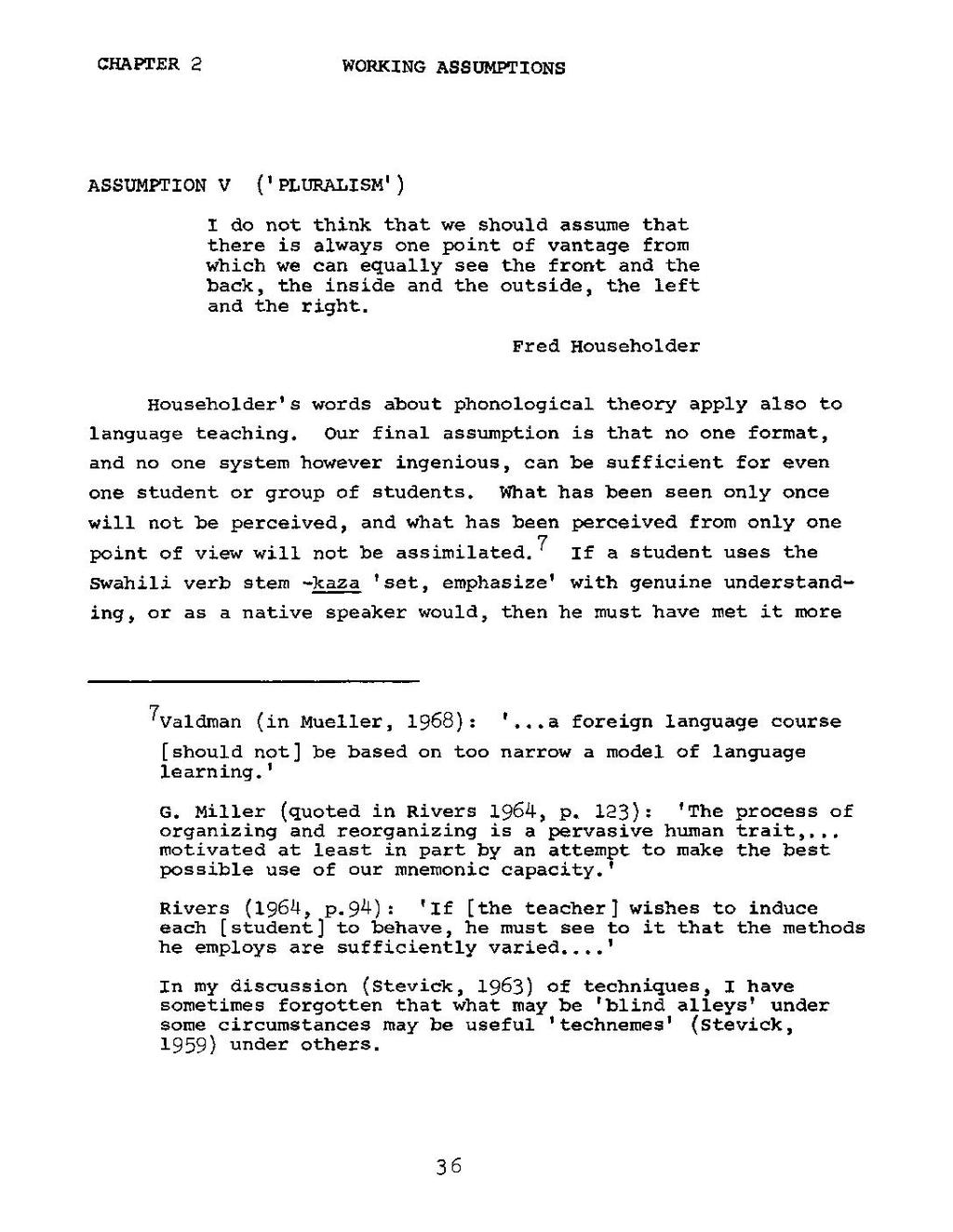ASSUMPTION V ('PLURALISM')
I do not think that we should assume that there is always one point of vantage from which we can equally see the front and the back, the inside and the outside, the left and the right.
Householder's words about phonological theory apply also to language teaching. Our final assumption is that no one format, and no one system however ingenious, can be sufficient for even one student or group of students. What has been seen only once will not be perceived, and what has been perceived from only one point of view will not be assimilated.[1] If a student uses the Swahili verb stem -kaza 'set, emphasize' with genuine understanding, or as a native speaker would, then he must have met it more
- ↑
Valdman (in Mueller, 1968): '…a foreign language course [should not) be based on too narrow a model of language
learning.'
G. Miller (quoted in Rivers 1964, p. 12~): 'The process of organizing and reorganizing 1S a pervas1ve human trait,… motivated at least in part by an attempt to make the best possible use of our mnemonic capacity.'
Rivers (1964, p.94): 'If [the teacher] wishes to induce each [student] to behave, he must see to it that the methods he employs are sufficiently varied…'
In my discussion (stevick, 1963) of techniques, I have sometimes forgotten that what may be 'blind alleys' undersome circumstances may be useful 'technemes' (Stevick, 1959) under others.
36
